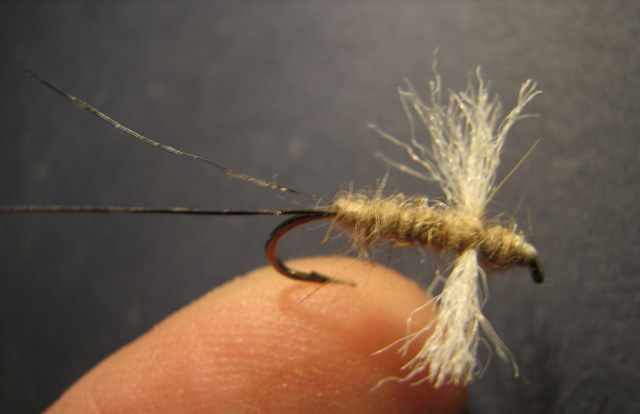|
|
| Blue Dun Spinner - Tied by Bill Carpan |
Mayfly Cycle Part 4 – The Spinner
Mayfly duns usually hatch late in the morning and fly off the water to find
cover in the bushes. The final stage of the mayfly, called the spinner, usually hatches from the dun stage in early evening.
Calm, warm evenings are ideal. Then they swarm over the water in a distinctive mating ritual. Once mating has taken
place the spinners die, often covering the water surface.
Spinners have clear wings, long tails, and bodies are often slimmer and lighter coloured than the dun stage.
Duns often hatch over a few hours, while spinners seem to fall all at once, resulting in a trout feeding frenzy that
begins suddenly and ends only when they have eaten all they can hold. The surface may be covered with spinners with no trout
feeding, because they can only feed until stuffed. If you arrive after dinner you’ve missed the party.
Dying spinners have wings horizontal and flush with the water surface, in
contrast to the vertical upright wings of the dun. Here’s a simple, effective spinner imitation.
Blue Dun Spinner
Hook –
Mustad 94840 or 94831 dry fly hook, size 12 - 18
Thread –
Grey
Tails
– Two black, tapered,
paintbrush bristles
Body – Dun
grey synthetic dubbing (like Superfine Dry Fly Dubbing)
Wings –
White Antron yarn
Hackle – None
Head -
Grey thread, finished with a high-penetrating cement like Pro-Lac.
Please stay
on the line …April 2, 2008 - Mayfly Cycle Part 3 - Dun
May 15, 2008 - Sea Trout Streamers

